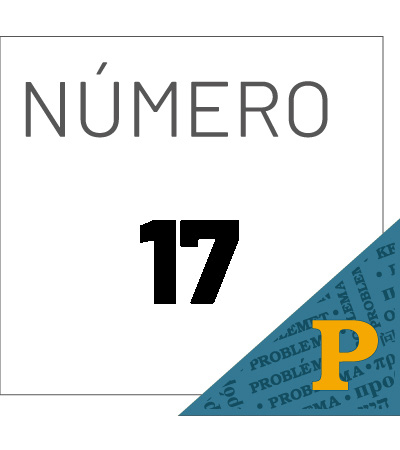The Citizenship Rights of Veracruz’s Roosters
El objetivo de este artículo es mostrar que México está a la vanguardia de la tendencia actual que reconoce a los animales no humanos como sujetos de derecho, al reconocerles derechos de ciudadanía. En el artículo se argumenta que una reciente resolución de la Suprema Corte de Justicia de México, relativa a una legislación local, debe ser interpretada como concediendo derechos de ciudadanía a los animales no humanos que residen en el estado donde la legislación aplica. El artículo comienza discutiendo el contexto en el que la ley en cuestión fue discutida y aprobada, así como las acciones judiciales tomadas en su contra. Posteriormente, se discuten el análisis y la resolución alcanzados por la Suprema Corte de los derechos involucrados y la dinámica entre ellos; el artículo también incluye una defensa de esta resolución. Más aún, el texto argumenta que las protecciones establecidas por esta resolución deben ser interpretadas en concordancia con las teorías académicas contemporáneas sobre la ciudadanía y los derechos animales como derechos, y que estos derechos deben ser interpretados como derechos de ciudadanía. El artículo termina respondiendo a algunas objeciones y presentando varias conclusiones generales.
Detalles del artículo
Uso de licencias Creative Commons (CC)
Todos los textos publicados por Problema. Anuario de Filosofía y Teoría del Derecho sin excepción, se distribuyen amparados con la licencia CC BY-NC 4.0 Internacional, que permite a terceros utilizar lo publicado, siempre que mencionen la autoría del trabajo y la primera publicación en esta revista. No se permite utilizar el material con fines comerciales.
Derechos de autoras o autores
De acuerdo con la legislación vigente de derechos de autor Problema. Anuario de Filosofía y Teoría del Derecho reconoce y respeta el derecho moral de las autoras o autores, así como la titularidad del derecho patrimonial, el cual será transferido —de forma no exclusiva— a Problema para permitir su difusión legal en acceso abierto.
Autoras o autores pueden realizar otros acuerdos contractuales independientes y adicionales para la distribución no exclusiva de la versión del artículo publicado en Problema. Anuario de Filosofía y Teoría del Derecho (por ejemplo, incluirlo en un repositorio institucional o darlo a conocer en otros medios en papel o electrónicos), siempre que se indique clara y explícitamente que el trabajo se publicó por primera vez en Problema.
Para todo lo anterior, deben remitir la carta de transmisión de derechos patrimoniales de la primera publicación, debidamente requisitada y firmada por las autoras o autores. Este formato debe ser remitido en PDF a través de la plataforma OJS.
Derechos de lectoras o lectores
Con base en los principios de acceso abierto las lectoras o lectores de la revista tienen derecho a la libre lectura, impresión y distribución de los contenidos de Problema por cualquier medio, de manera inmediata a la publicación en línea de los contenidos. El único requisito para esto es que siempre se indique clara y explícitamente que el trabajo se publicó por primera vez en Problema. Anuario de Filosofía y Teoría del Derecho y se cite de manera correcta la fuente incluyendo el DOI correspondiente.
Consúltese https://creativecommons.org/licenses/by-nc/4.0/

Esta obra está bajo una licencia internacional Creative Commons Atribución-NoComercial 4.0.
Citas
Alexy, R. (2007). Teoría de la argumentación jurídica (p. 545). Palestra Editores.
Barak, A. (2012). Proportionality. Cambridge University Press.
Carens, J. H. (2013). The Ethics of Immigration. Oxford University Press.
Consejo Económico y Social de la ONU. (2010). Derecho de toda persona a participar en la vida cultural (artículo 15, párrafo 1 a).
Constitución Política de los Estados Unidos Mexicanos. (2021). Diario Oficial de la Federación, 354.
Donaldson, S. & Kymlicka, W. (2011). Zoopolis. Oxford University Press.
Dworkin, R. (1978). Taking Rights Seriously. The Oxford Handbook of Classics in Contemporary Political Theory (p. 368). Harvard University Press. https://doi.org/10.1093/oxfordhb/9780198717133.013.18
Francione, Gary. L. (2000). Introduction to Animal Rights: Your Child or the Dog? Temple University.
García, O. & Leonardo. R. (2018). Caso peleas de gallos: el derecho a la cultura y el club de la constitución. Nexos. https://eljuegodelacorte.nexos.com.mx/caso-peleas-de-gallos-el-derecho-a-la-cultura-y-el-club-de-la-constitucion/
Gobierno del Estado de Veracruz. (2016). Que reforma y adiciona diversos artículos de la ley de protección a los animales para el estado de veracruz de ignacio de la llave. Gaceta Oficial, 43, 9-17.
H. Congreso del Estado de Veracruz. (2016). Ley de Protección a los Animales para el Estado de Veracruz de Ignacio de la LLave.
H. Congreso del Estado de Veracruz. (2016). Versión estenográfica de la sesión extraordinaria del tercer periodo de sesiones extraordinarias del tercer año de ejercicio constitucional (pp. 1-129).
Habermas, J. (1996). Between Facts and Norms: Contributions to a Discourse Theory of Law and Democracy. The MIT Press.
Horta, O. (2017). Animal Suffering in Nature: The Case for Intervention. Environmental Ethics, 39(3), 261-279.
Kant, I. (1997). Lectures on Ethics. Cambridge University Press. https://www.researchgate.net/publication/269107473_What_is_governance/link/548173090cf22525dcb61443/download%0Ahttp://www.econ.upf.edu/~reynal/Civil wars_12December2010.pdf%0Ahttps://think-asia.org/handle/11540/8282%0Ahttps://www.jstor.org/stable/41857625
Mcmahan, J. (2015). The moral problem of predation. Philosophy comes to Dinner: Arguments about the Ethics of Eating (pp. 268-293). Routledge. https://doi.org/10.4324/9780203154410-23
Regan, T. (1983). The Case for Animal Rights. University of California Press.
Reyes Sáenz, Luis. (forthcoming). En las frontera del discurso sobre discriminación: el caso de los animales no humanos. In Enrique Camacho Beltrán & Luis Muñoz Oliveira (Eds.), Trato de sombras. UNAM.
Rønnow-Rasmussen, T. (2015). Intrinsic and Extrinsic Value. In Iwao Hirose & Jonas Olson (Eds.), The Oxford Handbook of Value Theory. Oxford University Press.
Singer, P. (1975). Animal Liberation. Harper Collins Publishers. https://doi.org/10.1017/CBO9781107415324.004
Suprema Corte de Justicia de la Nación. (2009). Amparo 1890-2009 (p. 103).
Suprema Corte de Justicia de la Nación. (2011). Amparo directo 11/2011.
Suprema Corte de Justicia de la Nación. (2018). Amparo en revisión 163/2018.
Suprema Corte de Justicia de la Nación. (2022). Amparo en revisión 80/ 2022.
ACNUDH. (1966). Pacto Internacional de Derechos Económicos, Sociales y Culturales, 1 [testimony of Unidas]. https://www.ohchr.org/SP/ProfessionalInterest/Pages/CESCR.aspx
United Nations Educational Scientific and Cultural Organization (UNESCO). (1978). Universal Declaration of Animal Rights. United Nations Educational Scientific and Cultural Organization (pp. 1 and 2). https://constitutii.files.wordpress.com/2016/06/file-id-607.pdf
Wayne, N., & Kymlicka, W. (2007). Citizenship. In R. G. Frey & C. Heath Wellman (Eds.), A Companion to Applied Ethics (pp. 210–223). Blackwell.
























